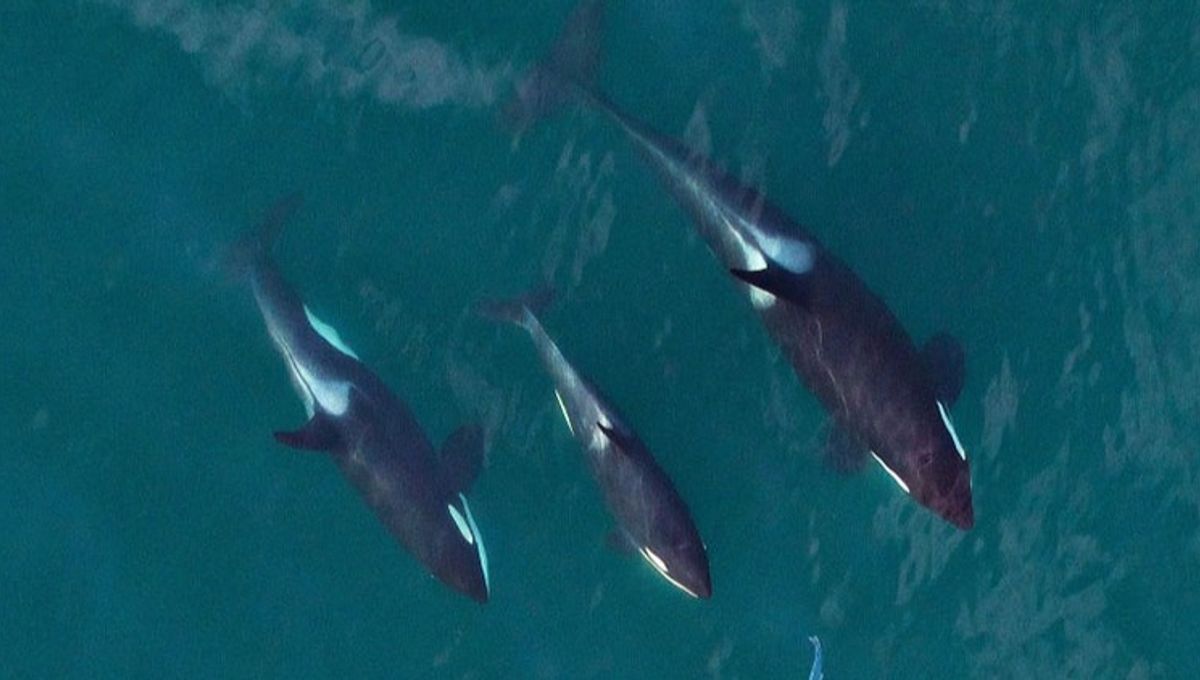
For the first time since 1970, members of the endangered Southern Resident population of orcas have been spotted in Penn Cove, a region off the coast of Washington State that was the site of a notorious capture incident involving the whales.
Non-profit organization Ocean Conservancy, which is based in Washington, announced the news on social media platform X (Twitter) on November 4.
“Earlier today L Pod, members of the Southern Resident killer whale community, went into Penn Cove off the east side of Whidbey Island,” they posted. “To our knowledge, this is the first time any Southern Resident has entered Penn Cove since the captures of 1970.”
The pod returned the next day and were observed swimming further into the cove, where they were seen breaching the surface and spy-hopping – that’s a behavior where whales hold themselves vertically in the water so that their heads stick out and they can see what’s going on around them.
Why did the orcas disappear?
While the return of Southern Resident orcas to the cove has been welcomed, it’s also served as a reminder of why they disappeared from the region in the first place.
On August 8, 1970, Penn Cove saw a large-scale attempt to round up orcas and take them into captivity to be displayed in marine parks. Over 80 orcas were herded into the area using speed boats and explosives, with spotter planes helping from above.
A total of seven orca calves were captured, one of which was Tokitae – also known as Lolita – who spent more than 50 years in captivity at Miami Seaquarium and died last year, shortly before she was due to be released.
During the incident, as many as five orcas drowned in the nets and it was later revealed that dead whales were sunk by those involved in order to conceal the deaths.
Please note: some readers may find the video below distressing.
Public outcry following the capture marked something of a turning point. In 1972, the US Congress passed the Marine Mammal Protection Act, which made it illegal to capture orcas (and other marine mammals) without a permit.
SeaWorld was one of the companies given a permit to capture orcas in Washington State waters, but after it was involved in another grim incident in 1976 at Budd Inlet, a court ordered the permit to be given up.
Since then, the state’s waters have been unofficially closed to orca captures – but that wasn’t enough for the whales to make a quick return to the area.
“Orcas are cultural animals [and] pass down information generationally. The whales that experienced captures in the 70s forever avoided the area & taught their offspring to avoid it as well,” explained Ocean Conservancy in a post to X.
As for why the whales have now returned, Ocean Conservancy has said that “it’s hard to say”.
“One possible explanation is that there has been enough lapse in generations that the younger generation is more open to exploring new places,” adding, “[I]t’s entirely possible that today they decided to duck into Penn Cove to get out of the wind gusts and rest.”
The Southern Resident population of orcas is listed as endangered under the US Endangered Species Act. Alongside disturbances from ships and the presence of pollutants, one of the main reasons for their decline is thought to be a lack of prey.
The reappearance of orcas in the cove might mean they’ve found some decent prey, according to Ocean Conservancy, who said: “We hope their continued presence in Saratoga Passage is an indication they are finding food.”
Source Link: Orcas Return To Infamous Penn Cove For First Time In Over 50 Years